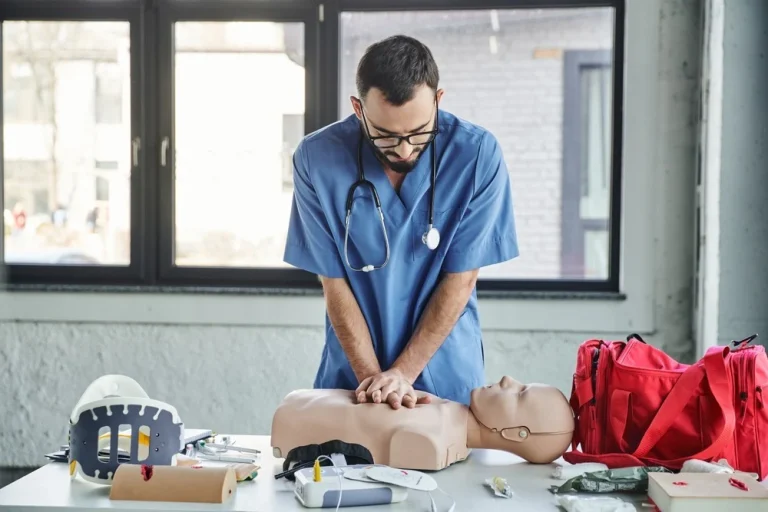Emergencies are unpredictable, and they can happen anywhere—at home, in the workplace, or in public spaces. One of the most critical emergencies is sudden cardiac arrest, where immediate action determines survival. While medical professionals are trained to respond, most cases occur outside hospitals, leaving bystanders to step in. The challenge, however, is that many people hesitate. They worry about doing something wrong or feel unprepared to act. CPR training addresses these barriers by building not only skills but also confidence, turning ordinary individuals into capable responders.
Breaking Down Barriers of Fear
Fear is the greatest obstacle when it eeetimes comes to emergency response. Many bystanders hesitate to help because they fear hurting the victim, performing CPR incorrectly, or facing legal consequences. Training removes these fears by providing knowledge and practice. It teaches that doing something—like delivering chest compressions—is far better than doing nothing. Participants learn the difference between myths and facts, understand legal protections like Good Samaritan laws, and leave knowing they can make a meaningful difference.
Simplifying the Process
CPR has been simplified over the years to encourage more public involvement. Guidelines now emphasize hands-only CPR for most adult cardiac arrests, which involves only chest compressions. This eliminates the hesitation some people feel about mouth-to-mouth resuscitation. Training programs show that even these simplified steps are highly effective in maintaining blood flow until emergency responders arrive. By reducing complexity, CPR becomes a skill anyone can master, regardless of background.
The Role of Practice in Building Confidence
Confidence doesn’t come from theory alone—it comes from doing. Training sessions use manikins and real-life scenarios to help participants practice hand placement, compression depth, and rhythm. They rehearse calling emergency services, using an AED, and responding under pressure. This repetition builds muscle memory, so actions become instinctive in real emergencies. More importantly, practice helps participants experience the stress of simulated scenarios in a safe environment, preparing them for the pressure of real life.
Why Confidence Improves Survival Rates
Confidence is directly tied to survival outcomes. A hesitant bystander may lose precious minutes, but a confident one acts immediately. Every minute without CPR lowers survival chances dramatically, so early action matters most. When trained individuals know what to do and trust their ability to do it, they step forward without hesitation. Their confidence also influences others nearby—often encouraging additional help, creating a coordinated response that improves outcomes.
Expanding Skills Beyond CPR
CPR training often includes instruction on Automated External Defibrillators (AEDs). These devices analyze heart rhythms and deliver a shock if necessary, but many people are intimidated by them. Training sessions demonstrate how simple AEDs are to use, with voice prompts guiding each step. By practicing with AEDs, participants realize they are tools for everyone, not just professionals. Programs that combine CPR with AED education, such as structured cpr certification, give learners the confidence to handle a wider range of emergency situations.
Building Stronger Communities
Confidence built through CPR training extends beyond individuals—it benefits entire communities. When workplaces, schools, and neighborhoods have more trained people, the chances of someone responding quickly to cardiac arrest increase significantly. This creates a ripple effect, where trained individuals encourage others to learn, building a culture of readiness. Communities with widespread training often report higher survival rates and a stronger sense of shared responsibility for safety.
Correcting Misconceptions
CPR training also clears up common misconceptions that undermine confidence. Many believe CPR always restarts the heart instantly, as seen in movies. In reality, the goal is to maintain blood circulation until medical professionals can provide advanced care. Others assume incorrect technique could kill the victim. Training corrects these ideas, showing that even imperfect CPR is far better than none. Knowledge replaces uncertainty, giving people the assurance they need to act.
The Psychological Impact of Being Prepared
Knowing how to respond to emergencies has psychological benefits beyond CPR itself. People who undergo training feel safer and more prepared in daily life. They carry less anxiety about “what if” scenarios, whether at home, traveling, or caring for loved ones. This preparedness fosters a sense of control, which reduces panic in high-stress moments. It also contributes to personal growth—trained individuals often find themselves more confident in other areas of life as well.
Keeping Confidence Fresh
Like any skill, CPR confidence can fade over time. That’s why refresher courses are recommended every couple of years. Each session reinforces the skills and rebuilds confidence, ensuring readiness remains sharp. For workplaces, offering regular training also strengthens teams, encouraging collaboration in emergencies. Consistent practice ensures confidence doesn’t waver when it matters most.
Conclusion
CPR training goes beyond teaching technique—it instills the confidence to act when lives are on the line. By overcoming fear, simplifying the process, and providing hands-on practice, training empowers non-medical responders to step forward without hesitation. This confidence improves survival rates, strengthens communities, and creates a culture of preparedness. Emergencies may be unpredictable, but with the right training, ordinary people can respond with calm assurance and make extraordinary differences.

